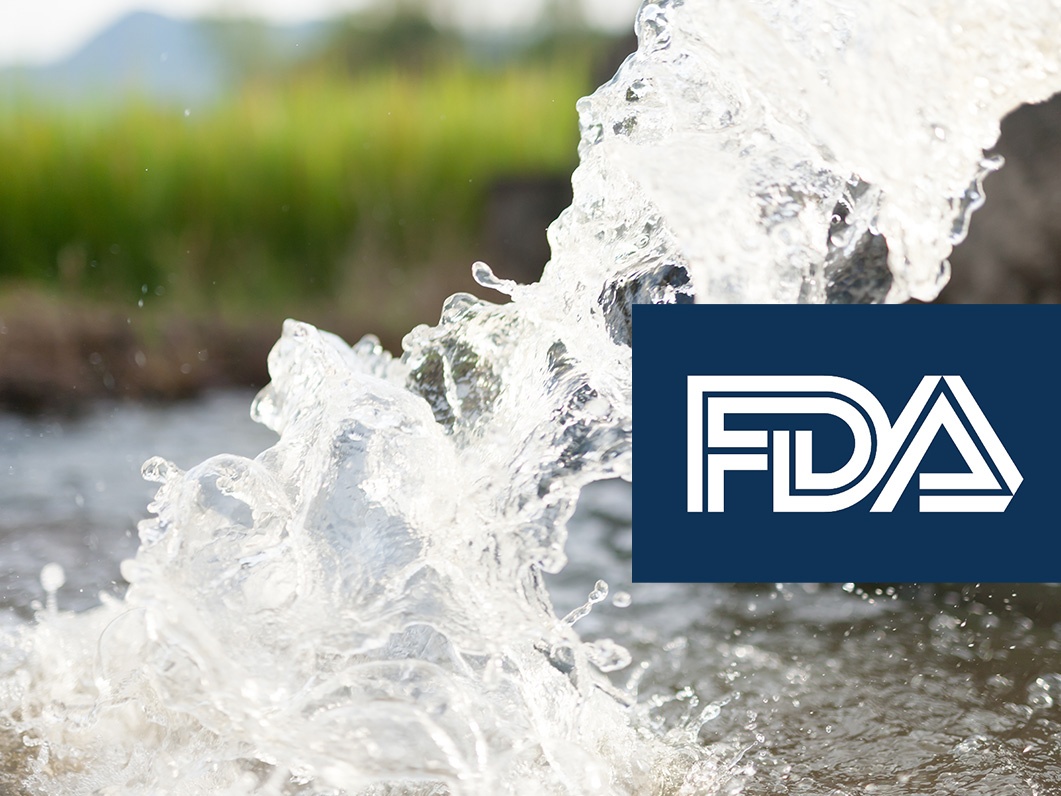United Fresh and other ag organizations are hosting a webinar on Dec. 16 at 3 p.m. ET on the recently released FDA proposal to changes in the agricultural water requirements (Subpart E) of the Produce Safety Rule.
In the webinar, FDA’s Kruti Ravaliya was scheduled to provide an overview of what the FDA has proposed, and where the FDA is seeking public comment (due April 5). In addition to United Fresh, other hosts include PMA, Georgia Fruit and Vegetable Growers Association, Northwest Horticultural Council, and Western Growers.
Time
On Dec. 2 the FDA published its proposed rule, which can be accessed at https://www.fda.gov/food/food-safety-modernization-act-fsma/fsma-proposed-rule-agricultural-water?utm_medium=email&utm_source=govdelivery, “that would revise subpart E of the FDA Food Safety Modernization Act (FSMA) Produce Safety Rule to change certain pre-harvest agricultural water requirements for covered produce other than sprouts,” an Agency press release said.
The proposed rule is available for public comment for 120 days. Comments should be submitted to docket FDA-2021-N-0471 on Regulations.gov.
The FDA encourages comments and questions to be submitted to the docket so that the agency can fully consider all feedback.
Additional questions, and requests for meeting and speaker engagements can be submitted via a Meeting Request Form (email to AgWater@fda.hhs.gov) and/or Speaker Request Form (email to AgWater@fda.hhs.gov).
“Under this proposal, farms would be required to conduct annual systems-based agricultural water assessments to determine and guide appropriate measures to minimize potential risks associated with pre-harvest agricultural water. The assessment would include an evaluation of the water system, agricultural water use practices, crop characteristics, environmental conditions, potential impacts on source water by activities conducted on adjacent and nearby land, and other relevant factors, such as the results of optional testing,” it continued.
The release also said, “In 2015, the FDA published the final Produce Safety Rule, establishing science- and risk-based standards for the safe growing, harvesting, packing, and holding of produce grown for human consumption. During outreach and education efforts on the final rule, the FDA heard from a variety of stakeholders that certain pre-harvest microbial quality criteria and testing requirements were too difficult to understand, interpret, and implement.
“After additional stakeholder engagement on these agricultural water requirements, the FDA extended the compliance dates for the agricultural water requirements for covered produce (other than sprouts) to allow time for the agency to consider how best to address stakeholder concerns while protecting public health. Sprouts are subject to different pre-harvest agricultural water testing requirements that are already in effect and are not impacted by this proposed rule.”
The proposal put forth on Dec. 2 “would replace the pre-harvest microbial water quality criteria and testing requirements with requirements for a systems-based pre-harvest agricultural water assessment for covered produce other than sprouts. This approach was developed following hundreds of farm visits and meetings with stakeholders, including an Agricultural Water Summit hosted by the Produce Safety Alliance. In addition, this proposal reflects findings from several recent produce outbreak investigations that offered additional insights into potential routes of contamination. The requirements described in this proposal are intended to be workable across produce farms of all sizes, both domestic and foreign, recognizing the wide variety of water systems, uses, and practices. They also are designed to be adaptable to future advancements in agricultural water quality science and technology,” the release said.
And it added, “If finalized, farms covered by the Produce Safety Rule would be required to conduct an assessment of their pre-harvest agricultural water annually, and whenever a significant change occurs, to identify any conditions likely to introduce known or reasonably foreseeable hazards into or onto covered produce or food contact surfaces. Based on their assessments, farms would then determine whether corrective or mitigation measures are needed to reduce the potential for contamination.
“In light of findings from several recent produce outbreak investigations, the proposal also includes expedited mitigation measures that would be required for specific types of hazards related to certain activities associated with adjacent and nearby lands.
“The FDA is committed to engaging with stakeholders on the proposed rule. As such, the agency intends to hold two virtual public meetings to discuss the proposal and hear feedback. The public meetings will be announced in a forthcoming notice in the Federal Register. In addition, the agency is also developing an online tool to assist farms in evaluating potential risks posed by their water sources and in determining potential management options.”
The release continued, “Importantly, the FDA intends to work closely with our state partners to implement these changes, if finalized. Through the FDA-State Produce Safety Implementation Cooperative Agreement Program most states have taken the lead in developing produce safety programs which have included training and educating farms, and conducting inspections. If the proposal is finalized, the agency intends to work closely with state regulators, National Association of State Departments of Agriculture (NASDA), educators, and others, including the Produce Safety Alliance, to provide the necessary training to implement these changes to the agricultural water requirements.”
It concluded, “The FDA also recognizes that the current agricultural water compliance dates are set to begin in January 2022. The agency intends to exercise enforcement discretion for the agricultural water requirements for covered produce (other than sprouts) while proposing to extend the compliance dates for all subpart E provisions applicable to such produce, with the goal of completing the compliance date rulemaking as quickly as possible. More information on the proposed compliance dates will be announced in a forthcoming notice in the Federal Register.”


